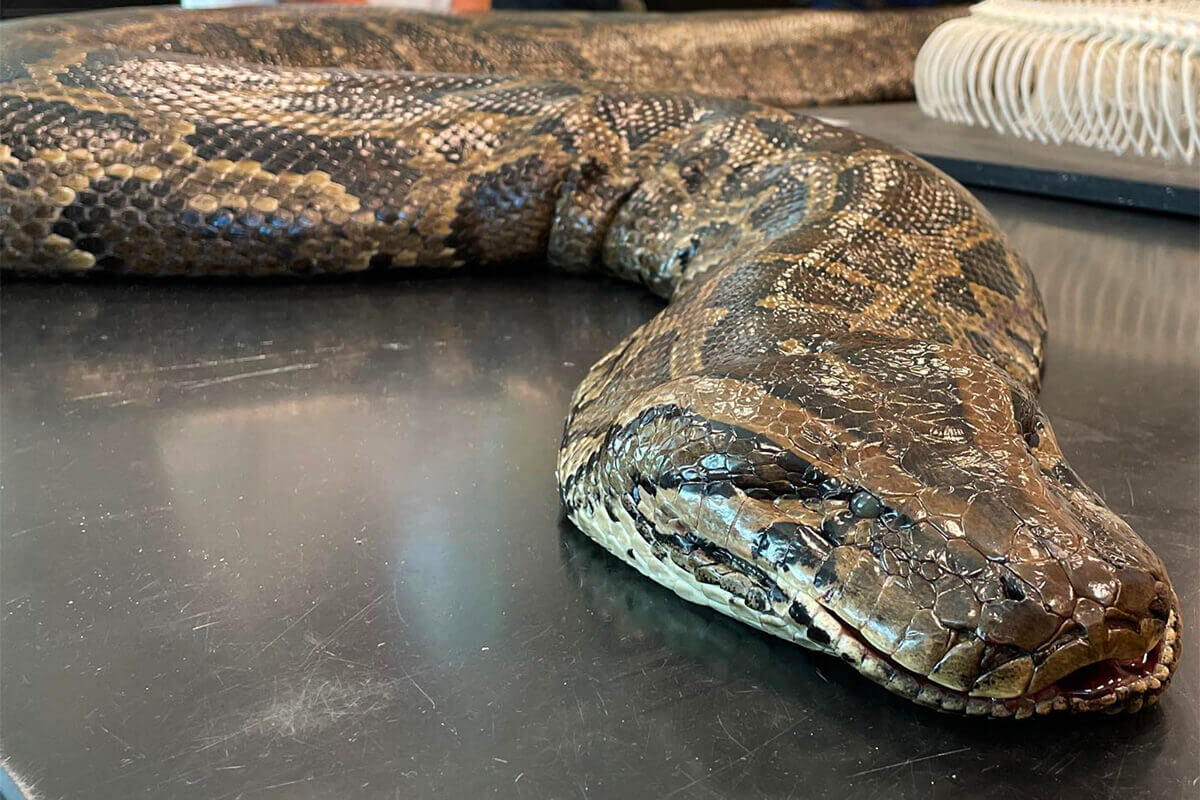In the world of reptiles, few creatures evoke as much fascination and fear as the largest snakes. Among these colossal serpents, the legendary 48-foot giant stands out, captivating the imagination of researchers and enthusiasts alike. This article delves into the remarkable features, habitat, and behavior of these enormous snakes, providing insights that are both intriguing and informative. As we explore the world of the largest snake, we'll uncover the myths and realities surrounding these incredible creatures, aiming to educate and engage readers with a passion for wildlife.
Whether you’re a snake aficionado or simply curious about the natural world, understanding the significance of the largest snakes can deepen our appreciation for biodiversity and the ecological roles these giants play. With a focus on the 48-foot snake, we will examine its biology, the environments it inhabits, and the conservation efforts necessary to protect these magnificent reptiles from extinction.
Join us as we embark on this journey through the serpentine world of the largest snakes, providing a comprehensive overview that balances scientific knowledge with engaging storytelling. Prepare to be amazed by the sheer scale and beauty of these extraordinary beings as we uncover the truth behind the headlines and myths surrounding the largest snake known to man.
Table of Contents
- Introduction
- Biography of the 48 ft Giant Snake
- Habitat of the Largest Snakes
- Physical Characteristics
- Diet and Feeding Habits
- Behavior and Social Structure
- Conservation Status and Efforts
- Myths and Facts About Large Snakes
- Conclusion
Introduction
The fascination with the largest snake is not merely a product of its size; it is also a reflection of the complex ecosystems these creatures inhabit. With reports of snakes reaching lengths of up to 48 feet, it is essential to separate fact from fiction and understand the realities of these magnificent reptiles.
Biography of the 48 ft Giant Snake
The largest snake ever recorded is the green anaconda, which can grow to extraordinary lengths. The largest verified specimen reached 48 feet, making it a subject of intrigue and study for herpetologists worldwide.
Data and Personal Information
| Attribute | Details |
|---|---|
| Common Name | Green Anaconda |
| Scientific Name | Eunectes murinus |
| Length | Up to 48 feet |
| Weight | Up to 550 pounds |
| Habitat | Swamps and rivers in South America |
| Diet | Carnivorous, feeding on fish, birds, mammals, and occasionally other reptiles |
Habitat of the Largest Snakes
Green anacondas thrive in humid environments, particularly in the wetlands of the Amazon Basin. These snakes prefer areas with abundant water sources, where they can hunt and bask in the sun. Their habitat is crucial for their survival, as it provides both food and shelter from predators.
Physical Characteristics
The most striking feature of the green anaconda is its massive size. With a robust body and powerful muscles, this snake is well-adapted for constricting its prey. Its coloration—typically a pattern of green and brown—serves as excellent camouflage in its aquatic environment.
Diet and Feeding Habits
As carnivores, green anacondas have a diverse diet. They primarily hunt by ambushing their prey, using their powerful bodies to constrict and suffocate. Their diet includes:
- Fish
- Birds
- Mammals such as capybaras and deer
- Occasionally other reptiles
Behavior and Social Structure
Green anacondas are generally solitary creatures, coming together only for mating. They are excellent swimmers and can hold their breath underwater for long periods, making them formidable hunters. Their behavior is often dictated by environmental conditions, with activity levels peaking during warmer months.
Conservation Status and Efforts
The conservation status of the green anaconda varies by region, but habitat destruction and illegal hunting pose significant threats. Conservation efforts focus on habitat protection and public education about the ecological importance of these snakes.
Myths and Facts About Large Snakes
Numerous myths surround the largest snakes, often exaggerating their size and behavior. It is crucial to debunk these myths to foster a better understanding of their ecological role and promote their conservation.
Conclusion
In conclusion, the 48-foot giant snake, primarily represented by the green anaconda, is a remarkable creature that plays a vital role in its ecosystem. Understanding its biology, habitat, and the threats it faces is essential for its conservation. We encourage readers to share their thoughts in the comments and explore more articles on wildlife and conservation.
Thank you for joining us on this exploration of the largest snake in the world. We hope you found this article informative and engaging, and we invite you to return for more insights into the fascinating world of wildlife.
Nestle Frozen Dinners: A Comprehensive Guide To Convenient And Delicious Meals
Man Attacked By Zebra: A Surprising Encounter With The Wild
Did Haley Leave Chicago PD? Unraveling The Mystery Behind Her Departure


